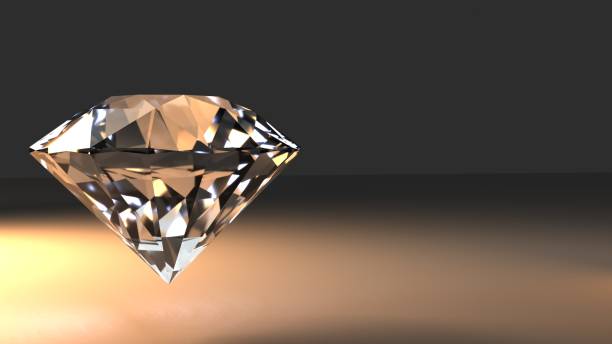The Right Cut Can Affect Popularity & Value All Entries

Diamonds are cut in a wide variety of shapes and sizes. While traditional cuts, such as round diamonds remain popular, they are far from the only choice for consumers. Advancements in technique and technology mean that diamonds can be cut in fascinating new shapes. Not surprisingly, the right cut can turn a humble rock into an exquisite and valuable work of art. This is why it's important to understand which cuts have the greatest value.
Round Cut Diamonds - Representing approximately 75% of all diamonds sold for jewelry, round diamonds are a strong and stable investment. This cut is renowned for highlighting the brilliant beauty of the stone. When cutting the raw stone, between 60-70% of the carat weight is lost which enhances the value of the retained carats.
Marquise Cut Diamonds - Marquise cut diamonds feature 56 facets in a style which dates back to King Louis XV. Not as popular or as valuable as princess or round cuts, it is nonetheless an exceptional cut that remains popular as a center stone within a larger setting. The complexity of the cuts coupled with the raw carats lost during cutting process help make this one of the more expensive diamond cuts on the market.
Asscher Cut Diamonds - Asscher cuts are square and often confused with emerald cut diamonds. The larger step cuts, higher crown, and more square than rectangular shape is what sets them apart. Popularity for these diamonds peaked in the early 20th century but has seen a resurgence in the last twenty years due to celebrity influences and improvements in cutting techniques.
Princess Cut Diamonds - Princess cut diamonds are available in both square and rectangular shapes. These diamonds are popular because they brilliantly display the stone's color and reflect this throughout the stone. They tend to be slightly less expensive than round diamonds. Partly due to the fact that 60-70% of the raw carat weight is retained in the final cut.
Emerald Cut Diamonds - Emerald cut diamonds feature a brilliant table with step cuts along the sides. These cuts reflect light in such a way that it creates a mirror effect which facilitates an optical illusion of a larger stone. The cut is less fiery than round or princess cuts but it is nonetheless appealing because of the way it reflects light throughout the stone.
Pillow-Cut Diamonds - Resembling a small pillow, these diamonds display an impressive flair and reflect light in an array of fiery brilliance. The square or rectangular shape of the cut has been around for over 200 years and was the most popular shape up until the 1920's when new techniques and styles began to eclipse the pillow-cuts popularity. The value of pillow-cut diamonds within estate jewelry is highly variable and depends largely on the preferences of the person making the purchase.
Other cuts include pear, radiant, oval, and heart. These rarer cuts can be more valuable than other cuts depending on the size and quality of the stone. For example, smaller heart cut diamonds are less valuable because their small size makes it more difficult to perceive the heart shape. While beautiful, these cuts should be thoroughly appraised and chosen for their value rather than their unique shape.
The team at Ralph Mueller would be delighted to discuss diamonds with you. We invite you to choose us when you want to learn more about the myriad of brilliant diamond cuts available. Our valuations are free of charge and our expert gemologists are ready to help you discover the true value of your jewelry.